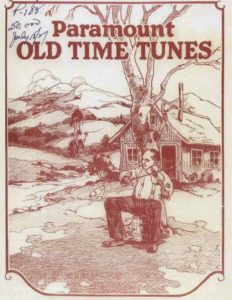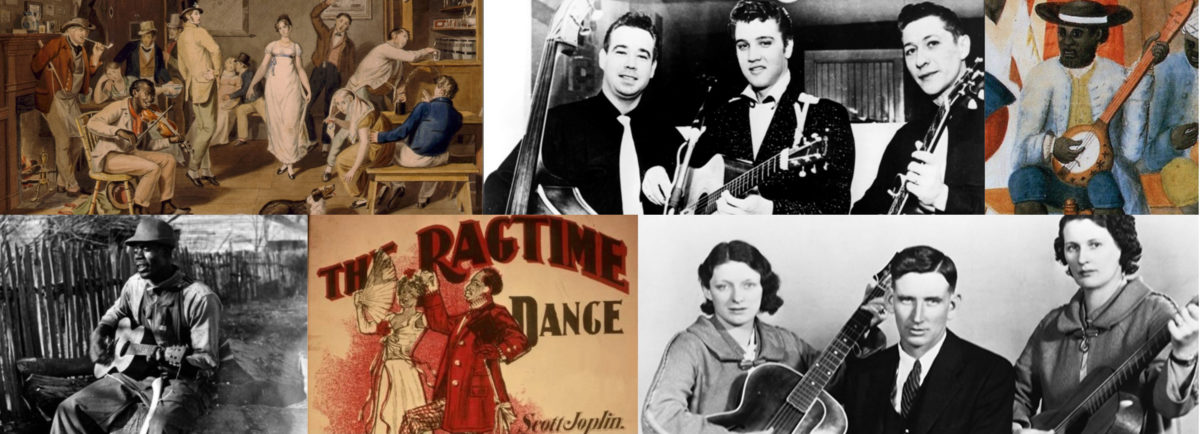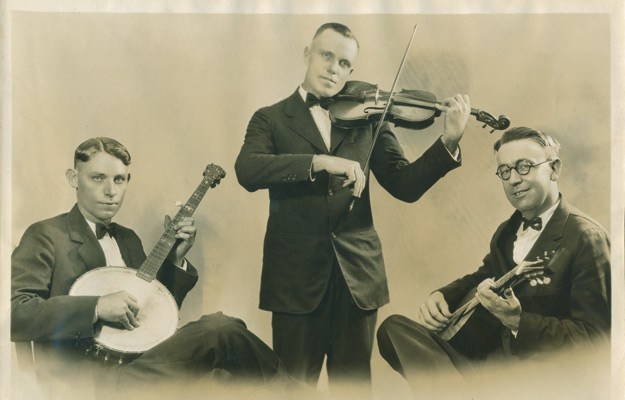Overview
Old-time music encompasses various styles that originated in rural America before recorded music and radio were widely available. This was music made in the home and in community spaces, generally for personal entertainment or dancing. It emerged from the synthesis of European and African musical sensibilities, particularly fiddle traditions from Scotland, Ireland, England, France, and Germany; ballad traditions from Scotland and England; and vocal, rhythm, and instrumental styles from West Africa. Much of this is embodied in the union of European fiddle and African banjo music (See Banjo: A Brief History).
The American southeast has been an especially productive incubator for old-time music styles. Today, the music remains unusually concentrated and persistent in the Southern Appalachian Mountains. Other parts of the United States also have their own regional old-time music styles.
Old-Time Music Recordings
Recordings from the late 1920s through the mid 1930s are among the best sources to hear old-time music. These recordings were generally made by and for white rural Southerners. Record labels marketed these records as "old familiar tunes," "old time tunes," and eventually "hillbilly." As one might infer from these descriptions, most of the songs were already old and familiar at the time they were first recorded in the '20s and '30s.

These original old-time music recordings included fiddle tunes, old British ballads and love songs, newer American ballads, songs from the blackface minstrel stage, hymns and camp meeting songs, and sentimental popular songs.
Fiddle Tunes
Old British Ballads
Newer American Ballads
Minstrel Songs
Tin Pan Alley/Sentimental Songs
Religious Music
Bluegrass and Old-Time Music
Though they share similar instrumentation and even some repertoire, bluegrass is not considered old-time music. Old-time music laid the foundation for bluegrass. Early bluegrass musicians like Bill Monroe, Earl Scruggs, and the Stanley Brothers played and listened to old-time music before bluegrass emerged in the 1940s. Bluegrass is a more modern form of Appalachian music that incorporates improvised solos, which are generally not part of old-time music traditions. Bluegrass also tends to be music for performance, whereas old-time music is connected to social events like dancing.
Old-Time Music Today
Old-time music is a living tradition. Some people who play it today prefer to stick close to the styles of the original source material, while others use the older styles as a springboard for creativity and innovation. These more contemporary adaptations are sometimes referred to as neo-traditional.
Weekly or monthly old-time music jams occur in many communities across the United States. These communities develop a shared repertoire of tunes that they play together in an informal setting. Contradances and square dances, accompanied by live old-time music, are also present in many parts of the United States. Many of the jams and dances focus almost exclusively on fiddle tunes.
Old-time music is also shared and passed on in more formal settings, such as fiddle contests and music camps. While fiddle contests are a place for players to compete, they are cherished by participants for the opportunity to jam and interact with like-minded musicians. The largest old-time music event in the United States is the Appalachian String Band Festival held every August in Clifftop, West Virginia. Approximately three-thousand musicians participate in this five-day mountaintop gathering, which features contests, concerts, workshops, square dances, and perhaps most importantly, informal jams at the campsites.
Musicians and non-musicians alike can learn how to play old-time music at a number of music camps, including Augusta Heritage Center of Davis & Elkins College's Old-Time Week (West Virginia), Mars Hill University's Blue Ridge Old-Time Music Week (North Carolina), Old-Time Week at Warren Wilson College's Swannanoa Gathering (North Carolina), and Ashokan Music & Dance Camps (New York). These camps provide excellent opportunities to learn directly from experts in old-time music traditions and to interact with other enthusiasts. In one-week or weekend sessions, they offer classes ranging from beginning to advanced fiddle, banjo, guitar, singing, mandolin, dance, and more.
Old-Time Music Artists
Here's a short list of artists for further exploration. Search for them on your favorite sites (YouTube, Spotify, Apple Music, Wikipedia, etc.).
Old Old-Time Artists
(recorded primarily in the 1920s - 1930s)
- Clarence Ashley
- Fiddlin' John Carson
- Grayson & Whitter
- Uncle Dave Macon
- Charlie Poole
- Eck Robertson
- The Skillet Lickers
- Ernest Stoneman
Mid Old-Time Artists
(recorded primarily in the mid to late 20th century)
- Highwoods String Band
- The Hollow Rock String Band
- Tommy Jarrell
- New Lost City Ramblers
- Doc Watson
New Old-Time Artists
(recorded in the 21st century)
- Crooked Still
- Dom Flemons
- Foghorn Stringband
- The Mammals
- Uncle Earl
- The Wailin' Jennys


